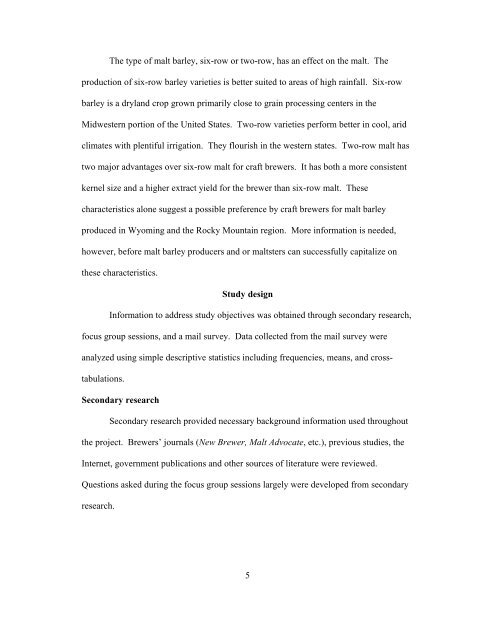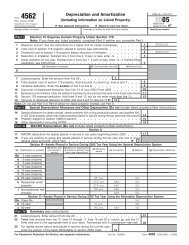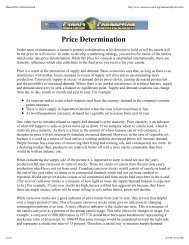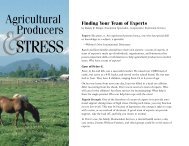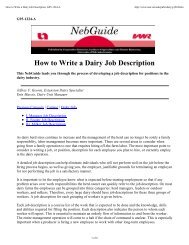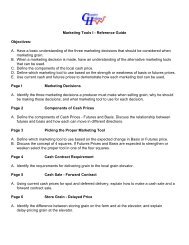Malt Preferences of the Craft Brewing Industry - Agricultural ...
Malt Preferences of the Craft Brewing Industry - Agricultural ...
Malt Preferences of the Craft Brewing Industry - Agricultural ...
You also want an ePaper? Increase the reach of your titles
YUMPU automatically turns print PDFs into web optimized ePapers that Google loves.
The type <strong>of</strong> malt barley, six-row or two-row, has an effect on <strong>the</strong> malt. Theproduction <strong>of</strong> six-row barley varieties is better suited to areas <strong>of</strong> high rainfall. Six-rowbarley is a dryland crop grown primarily close to grain processing centers in <strong>the</strong>Midwestern portion <strong>of</strong> <strong>the</strong> United States. Two-row varieties perform better in cool, aridclimates with plentiful irrigation. They flourish in <strong>the</strong> western states. Two-row malt hastwo major advantages over six-row malt for craft brewers. It has both a more consistentkernel size and a higher extract yield for <strong>the</strong> brewer than six-row malt. Thesecharacteristics alone suggest a possible preference by craft brewers for malt barleyproduced in Wyoming and <strong>the</strong> Rocky Mountain region. More information is needed,however, before malt barley producers and or maltsters can successfully capitalize on<strong>the</strong>se characteristics.Study designInformation to address study objectives was obtained through secondary research,focus group sessions, and a mail survey. Data collected from <strong>the</strong> mail survey wereanalyzed using simple descriptive statistics including frequencies, means, and crosstabulations.Secondary researchSecondary research provided necessary background information used throughout<strong>the</strong> project. Brewers’ journals (New Brewer, <strong>Malt</strong> Advocate, etc.), previous studies, <strong>the</strong>Internet, government publications and o<strong>the</strong>r sources <strong>of</strong> literature were reviewed.Questions asked during <strong>the</strong> focus group sessions largely were developed from secondaryresearch.5


